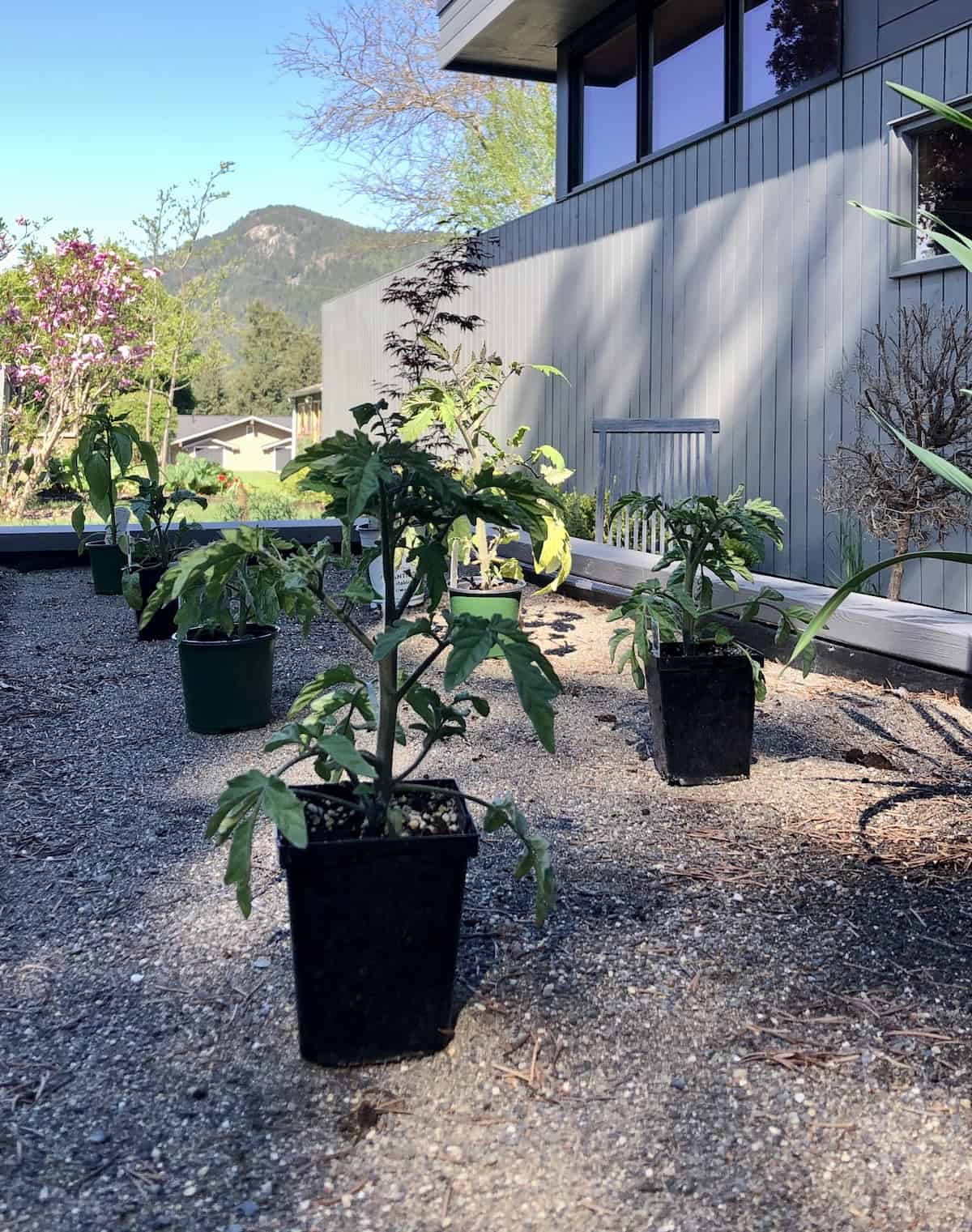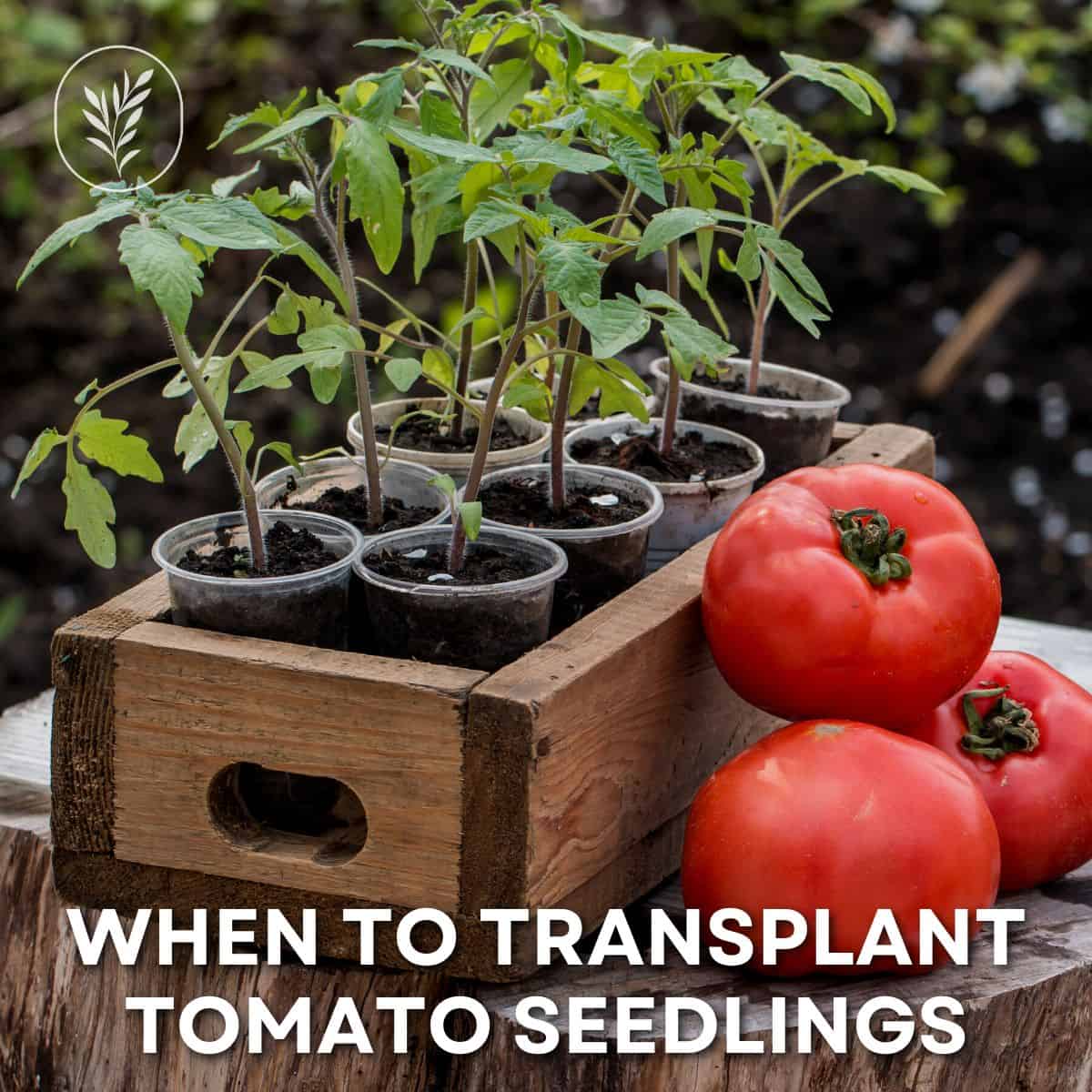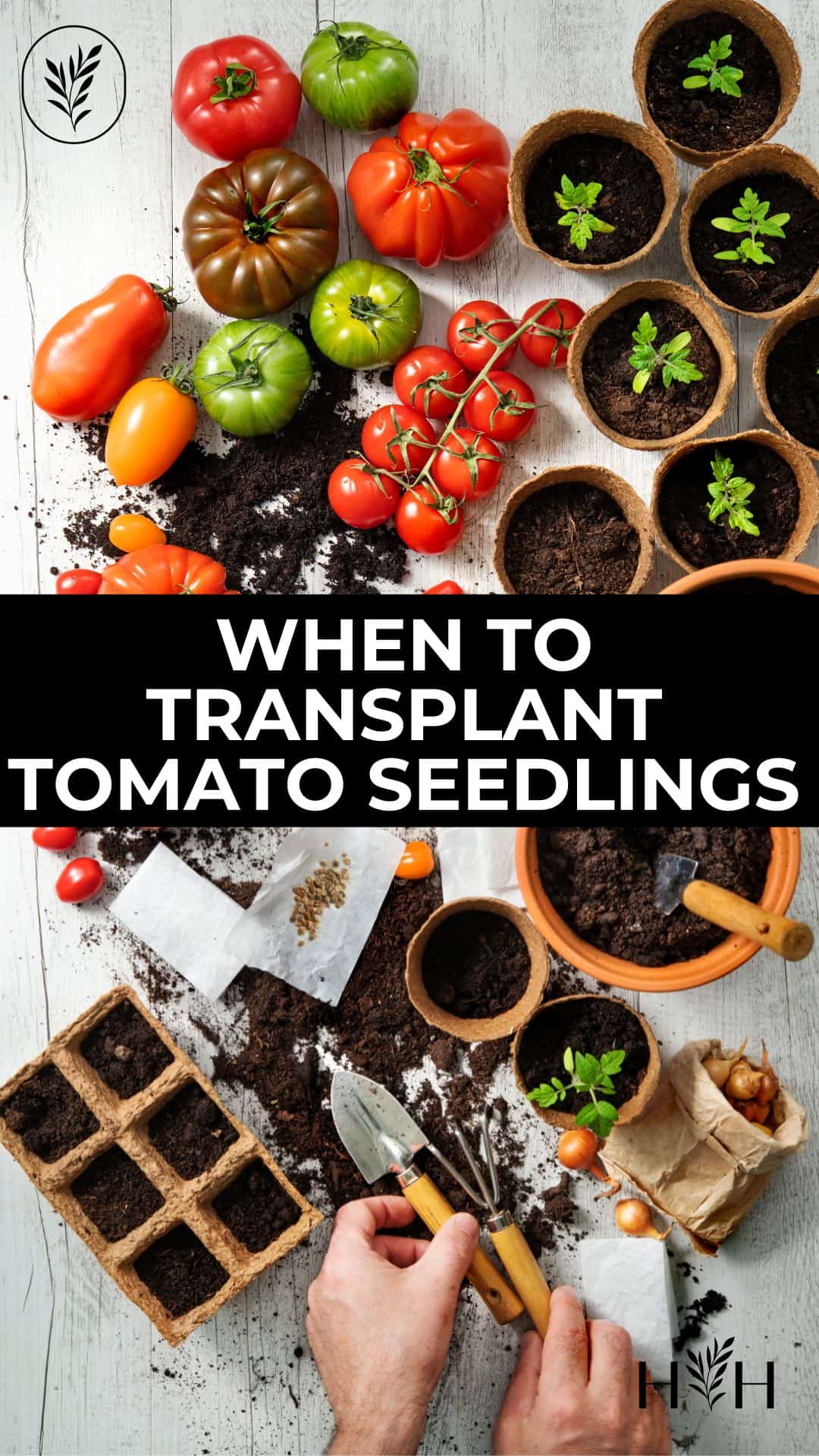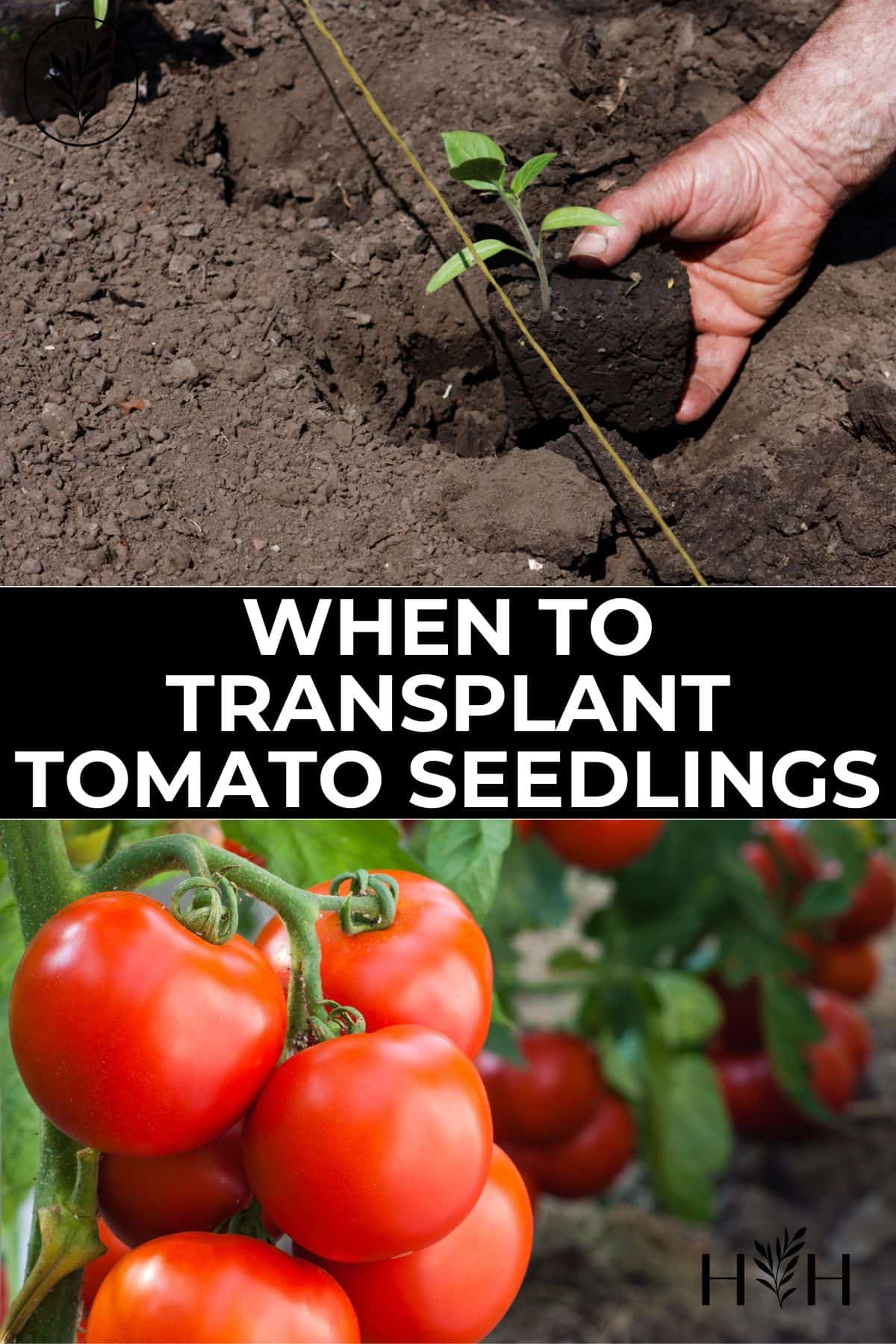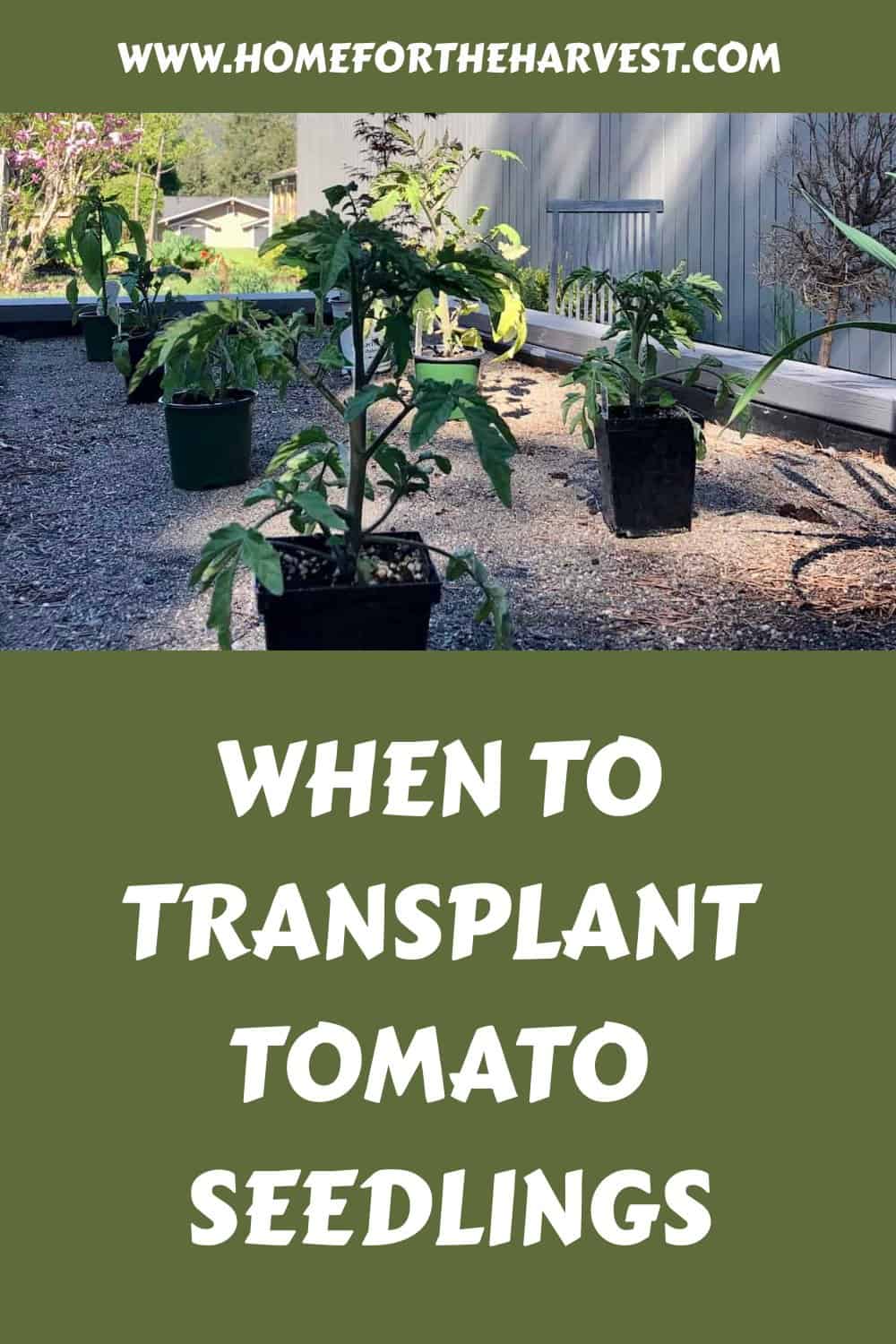Here are the most important considerations for deciding when to transplant tomato seedlings to the outdoor garden:
- Nighttime temperatures are generally no lower than 50°F (10°C), and certainly no lower than 43°F (6°C).
- The roots hold the soil together in a clump.
- Proper “true” leaves are established on the plant.
Wait until cold temperatures have passed
Tomatoes don’t like the cold. Wait until the cool temperatures of early spring have passed before thinking about transplanting tomato seedlings into the outdoor garden.
So how cold is TOO cold for planting and transplanting tomatoes? Below-freezing temperatures are too cold for growing tomatoes. Even a light frost date can mean the end for a tomato seedling. Growing tomatoes is done best in the heat and detest cold temperatures. But where is the line?
Tomatoes can be injured by temperatures below 43°F (6°C). In the range of 43° to 50°F (6° to 10°C), the growth of tomato plants is pretty much stopped (and possibly stunted).
Do not transplant tomatoes outdoors until both daytime and nighttime temperatures are consistently above 50°F (10°C). Temperatures below 43°F (6°C) are too low for young plants to survive without being injured by the cold.
Here are some helpful excerpts from the text “Mineral Nutrition of Plants” about the impact of cold temperatures on garden tomatoes:
“The cultivated tomato, Lycopersicon esculentum, is a classic example of a chilling-sensitive plant. Temperature below 10 degrees Celsius severely inhibit tomato growth and development at all life stages, and those below 6 degrees Celsius inflict significant injury (Geisenberg and Stewart 1986).”
Mineral Nutrition of Plants: Principles and Perspectives, by Emanuel Epstein and Arnold J. Bloom
“Chiling impedes root growth of chilling-sensitive species. The roots of cultivated tomato cease to grow at 10 degrees Celsius, and growth is slow to recover after rewarming (Scott and Jones 1986).”
Mineral Nutrition of Plants: Principles and Perspectives, by Emanuel Epstein and Arnold J. Bloom
“Chilling the roots of the cultivated tomato damages ammonium influx, but not nitrate uptake or ammonium efflux (Bloom et al. 1998). Less than two hours of exposure are sufficient to cause damage, but more than eight hours at moderate temperatures are required for recovery.”
Mineral Nutrition of Plants: Principles and Perspectives, by Emanuel Epstein and Arnold J. Bloom
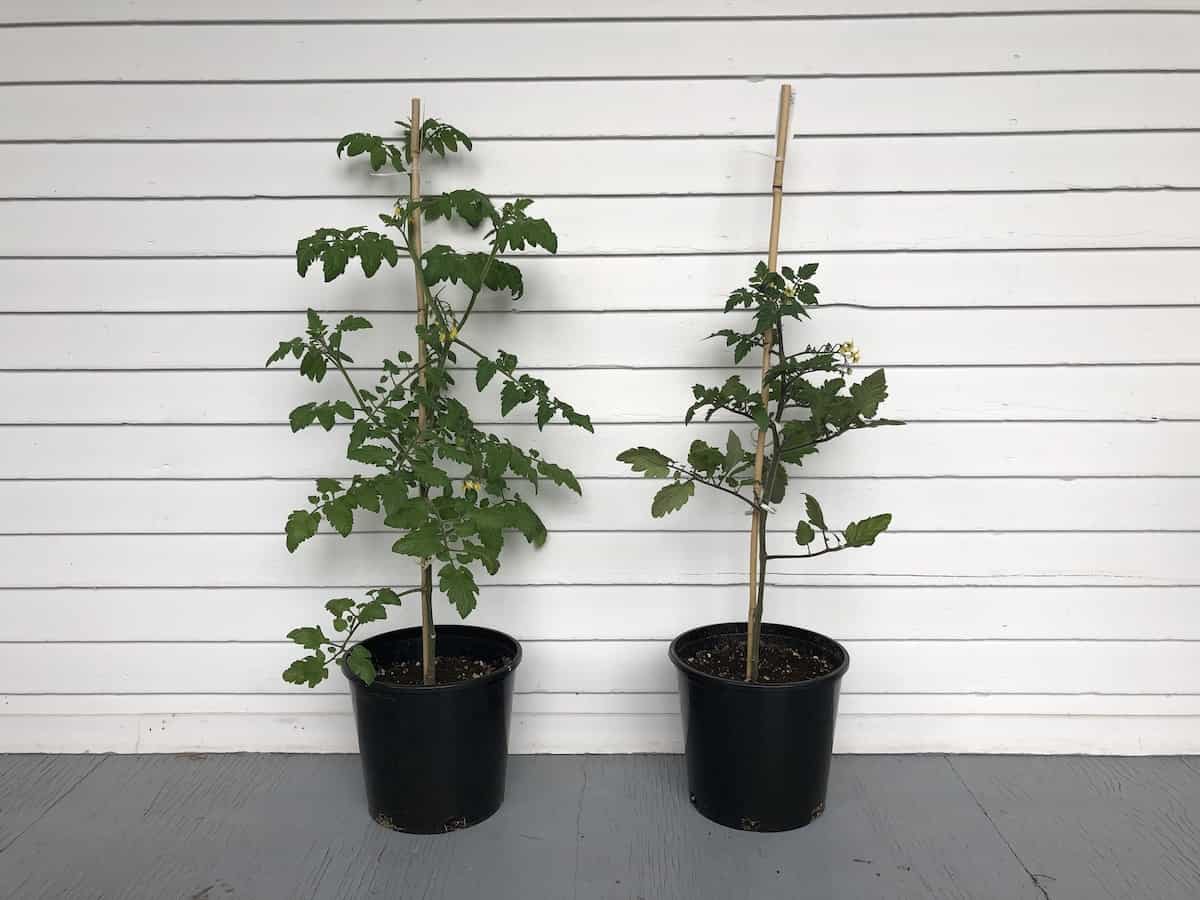
Watching the effect of cold temperatures on tomato plants
We did a backyard experiment with two tomato seedlings to observe the influence of cold temperatures. We started with two very similar Sungold tomato seedlings (we picked the two that were the closest matching pair). direct sunlight
PS: Sungold made the top 5 of the tastiest tomato types list
One plant came indoors whenever the temperature threatened to go below 50°F (10°C). The other plant only came indoors when a frost date was threatened. This second plant experienced temperatures below 50°F (10°C) on most nights and below 43°F (6°C) on several nights.
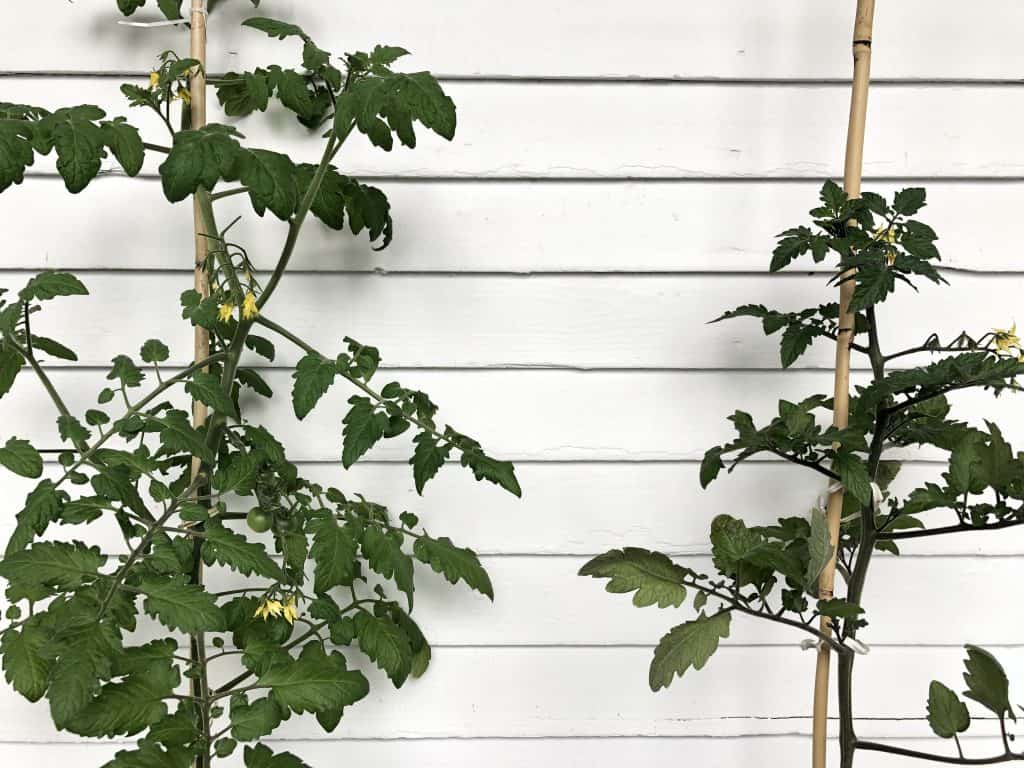
We started this little test on April 22nd. Above is a photo of the two plants on May 6th. That’s the difference that two weeks make!
The plant on the left that never went below 50°F (10°C) already has tomatoes growing on it. The out-in-the-cold tomato on the right is short and is JUST starting to blossom. Don’t rush the (outdoor) season.
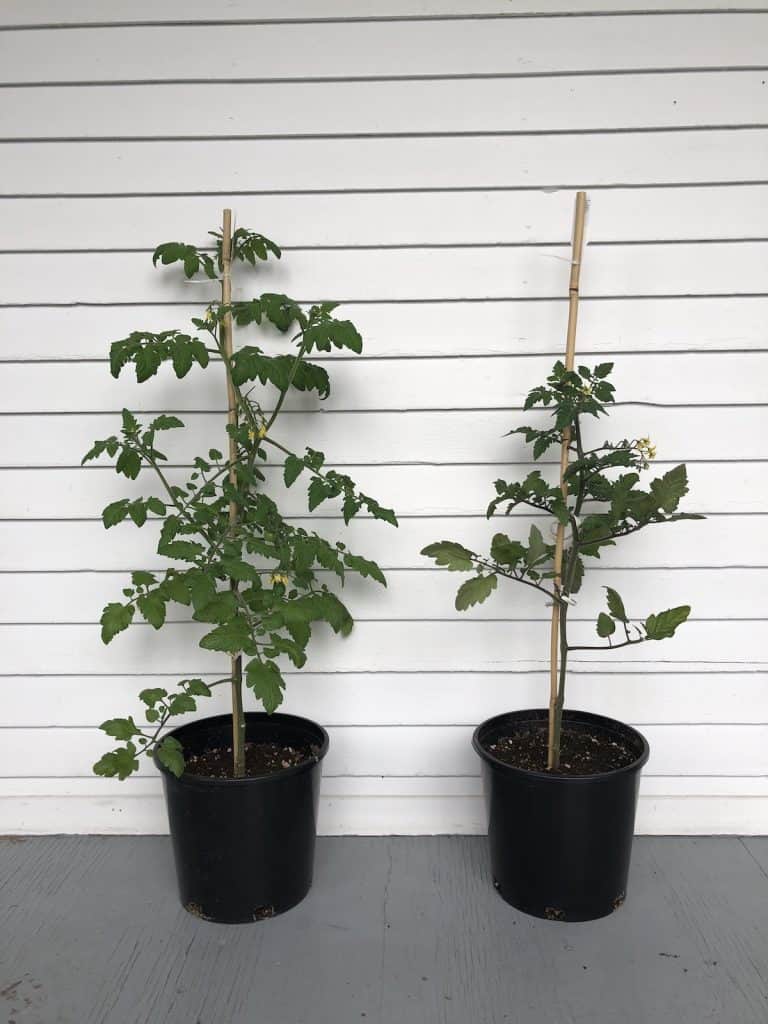
Seriously. Don’t rush the tomato season! You’ll actually be behind, not ahead.
Root development as a transplanting indicator
Repotting tomato seedlings can be done by moving them into a larger container (up-potted) or transplanted out into the garden when the roots have developed enough to start holding the soil in the pot together. There should be enough roots to keep the potting soil from crumbling away, but not so many roots that the entire outside of the root ball seems covered in roots (that is not good either).
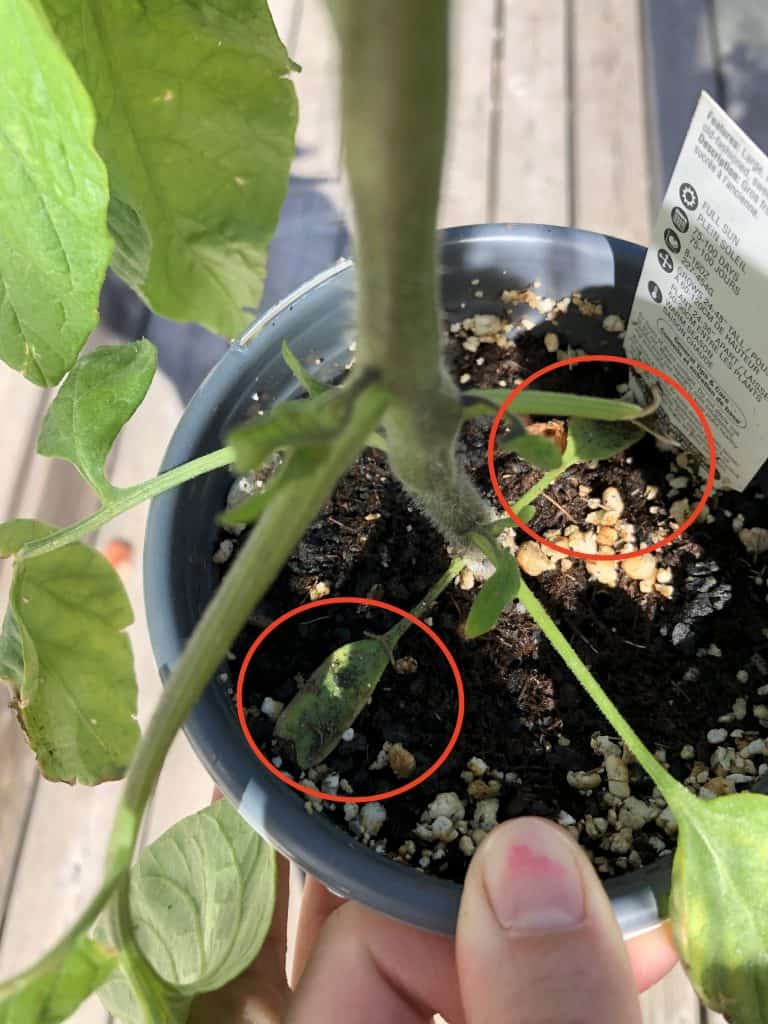
Wait until true leaves are established
Another way to gauge the plant’s development (without popping it out of its container) is to examine the top half of the plant and hope that the bottom half is also that far along. This means taking stock of how many “true” leaves the tomato seedling has.
Most tomato seedlings are grown in cell-pack trays until each plant has grown its pair of cotyledon “baby” leaves and then grown its first pair of “true” leaves. This usually takes about a month. At this point, the roots need more room to grow and the seedlings in the tray tend to start blocking each other’s light. Each healthy tomato seedling is up-potted into a 3″- 4″ pot to give it a bit more space. Some tomato plants are even up-potted a second time into a 1 or 2-gallon plant pot (like the Sungold tomato seedlings pictured earlier).
The point of all this up-potting is to give the tomato plant soil space to develop strong, healthy roots. This strong foundation will help the plant survive and thrive in the garden following transplanting.
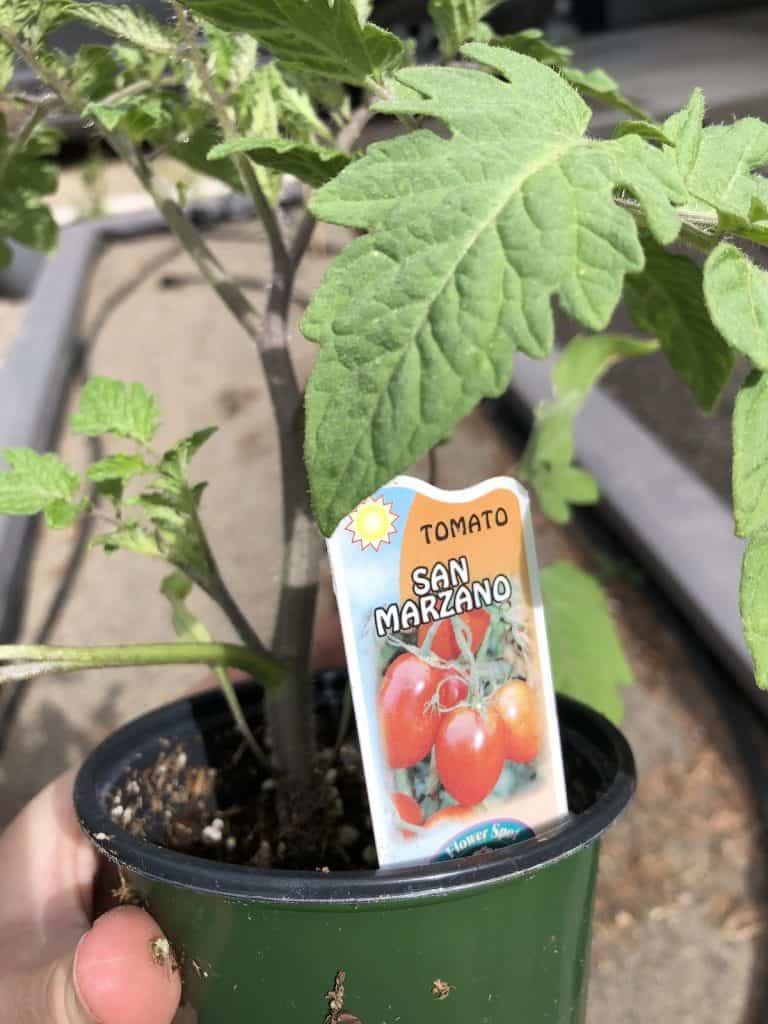
Seedling height of 10″-12″ tall
How big should seedlings be before transplanting? Seedlings are generally about 10″-12″ tall when transplanted outdoors. Shorter plants can certainly be transplanted as long as the other conditions are met, but the plants do seem to be approaching a foot tall by the time it’s warm enough to plant them outdoors in many areas.
Why are tomato seedlings generally 10″-12″ tall at transplanting? Because most tomato seedlings tend to be sold or grown in 3″-4″ wide pots…and once the seedling’s height is 3x larger than the pot’s width…the seedling has pretty much outgrown the pot.
While the height of the seedling maybe 10″-12″ above the soil line in the pot, the seedling won’t be that tall after transplanting. Most gardeners plant tomatoes deeper during the outdoor transplanting process. Ever notice those tiny little hairs on the stem? They will turn into more roots! This is a good thing.
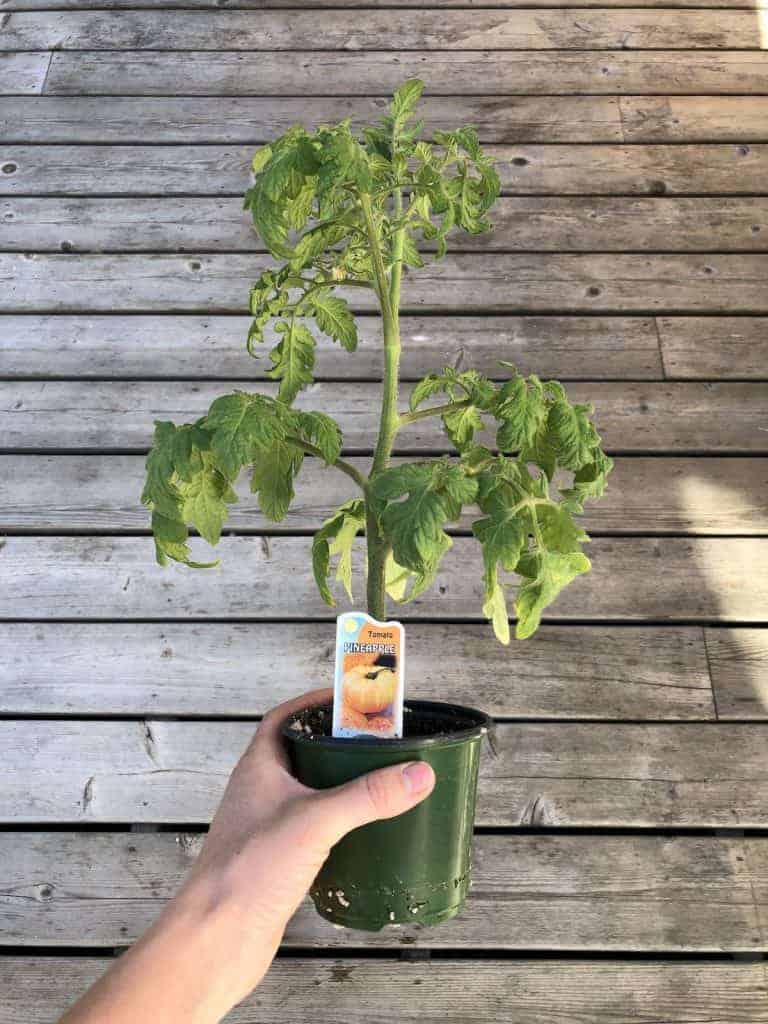
So, a tomato plant that was 10″-12″ above the soil line in the seedling pot may only be 5″-8″ above the soil line in the garden. Some gardeners plant tomato seedlings up to the first set of real leaves (the cotyledon “baby” leaves get buried). Some gardeners even remove the first set or two of true leaves and really bury quite a lot of the plant. But that’s not what this article is about!
Do consider how deep you’ll want to bury the plant though before deciding when to transplant it. If the lower leaves look sickly, you may wish to bury the plant past that point to encourage root growth since the leaves at that level aren’t doing much. Just try and consider where the outdoor soil line will be on the plant before you get outside and realize it would have been nice to have given it a couple more weeks indoors to beef up.
Read More: My Guide to Growing Tomatoes
Transplanting Seedlings for Specific Varieties
Each tomato variety has slight differences in how to transplant seedlings and their timelines. It is important to make notes of these differences as it will change the process of transplanting and taking care of the seedling or plant.
- Brandywine Tomatoes
- Black Krim Tomato
- Mortgage Lifter Tomato
- SunGold Tomatoes
- Cherokee Purple Tomatoes
- San Marzano Tomatoes
- Beefsteak Tomatoes
- Green Zebra Tomatoes
- Kellogg’s Breakfast Tomatoes
- Roma Tomatoes
- Pineapple Tomatoes
- Early Girl Tomatoes
- Tiny Tim Tomatoes
- Big Boy Tomatoes
- Better Boy Tomatoes
- Brandy Boy Tomatoes
- Big Beef Tomatoes
- Celebrity Tomatoes
- Arkansas Traveler Tomatoes
- Aunt Ruby’s German Green Tomatoes
- German Queen Tomatoes
- Carbon Tomatoes
- Juliet Tomatoes
- Sweet 100 Tomatoes
- Sweet Million Tomatoes
- Sun Sugar Tomatoes
- Black Cherry Tomatoes
- Yellow Pear Tomatoes


